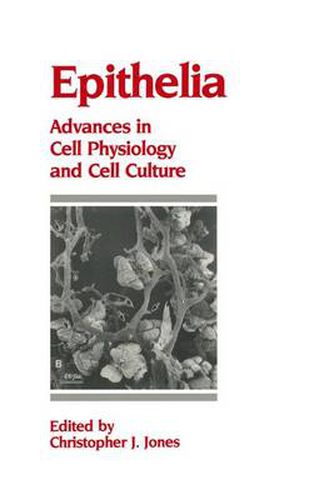Readings Newsletter
Become a Readings Member to make your shopping experience even easier.
Sign in or sign up for free!
You’re not far away from qualifying for FREE standard shipping within Australia
You’ve qualified for FREE standard shipping within Australia
The cart is loading…






This title is printed to order. This book may have been self-published. If so, we cannot guarantee the quality of the content. In the main most books will have gone through the editing process however some may not. We therefore suggest that you be aware of this before ordering this book. If in doubt check either the author or publisher’s details as we are unable to accept any returns unless they are faulty. Please contact us if you have any questions.
Epithelial cells probably constitute the most diverse group of cells found in the body. In addition to serving as interfaces between external and internal environments, their functions include ion and fluid secretion and reabsorp tion, protein exocytosis, hormone secretion, recognition, surface protection and the control of ciliary movement. By their very exposure on the surfaces of the body, epithelial cells are subjected to wide-ranging assault, by micro organisms and by chemical and physical forces. They are the targets for abrasion, infection and malignant transformation. Some epithelial cells show altered behaviour in inherited syndromes, such as cystic fibrosis, characterized by serious pancreatic and pulmonary disease. In view of the importance of epithelia and the fact that their function can be altered by environmental and inherited factors, they are the subject of intensive research, particularly so in the case of cancer where most tumours are of epithelial origin. The use of animal tissues in epithelial research continues to provide important advances and this, coupled with the need to focus more on human tissues, has prompted a greater research emphasis on accessible human epithelia and on the establishment of cell cultures from animal and human sources. For primary cell cultures and cell lines to be of value, they need to express properties appropriate to their progenitors and relevant to the study in progress.
$9.00 standard shipping within Australia
FREE standard shipping within Australia for orders over $100.00
Express & International shipping calculated at checkout
Stock availability can be subject to change without notice. We recommend calling the shop or contacting our online team to check availability of low stock items. Please see our Shopping Online page for more details.
This title is printed to order. This book may have been self-published. If so, we cannot guarantee the quality of the content. In the main most books will have gone through the editing process however some may not. We therefore suggest that you be aware of this before ordering this book. If in doubt check either the author or publisher’s details as we are unable to accept any returns unless they are faulty. Please contact us if you have any questions.
Epithelial cells probably constitute the most diverse group of cells found in the body. In addition to serving as interfaces between external and internal environments, their functions include ion and fluid secretion and reabsorp tion, protein exocytosis, hormone secretion, recognition, surface protection and the control of ciliary movement. By their very exposure on the surfaces of the body, epithelial cells are subjected to wide-ranging assault, by micro organisms and by chemical and physical forces. They are the targets for abrasion, infection and malignant transformation. Some epithelial cells show altered behaviour in inherited syndromes, such as cystic fibrosis, characterized by serious pancreatic and pulmonary disease. In view of the importance of epithelia and the fact that their function can be altered by environmental and inherited factors, they are the subject of intensive research, particularly so in the case of cancer where most tumours are of epithelial origin. The use of animal tissues in epithelial research continues to provide important advances and this, coupled with the need to focus more on human tissues, has prompted a greater research emphasis on accessible human epithelia and on the establishment of cell cultures from animal and human sources. For primary cell cultures and cell lines to be of value, they need to express properties appropriate to their progenitors and relevant to the study in progress.